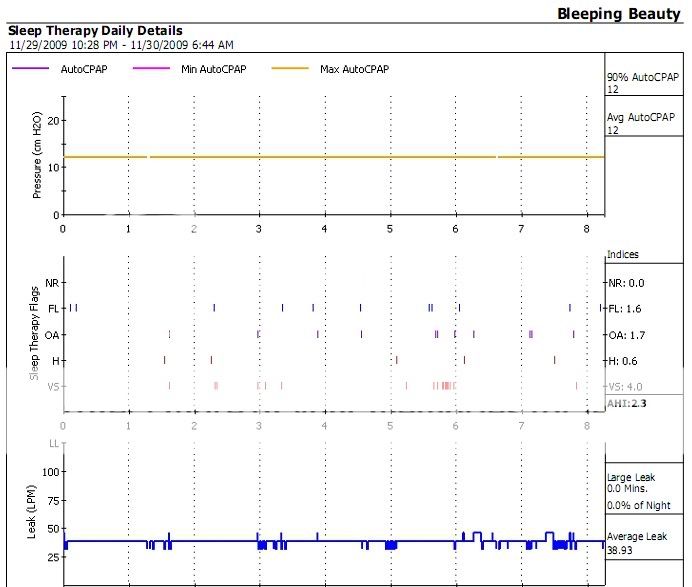cinco777 wrote:My earlier speculation/theory was that our machines did this to represent leak rates between the 7-apart granular leak rate values of 18, 25, 32, 39, 46, ... I have not developed any new theories for this phenomenon in recent months. I suspect that Velbor will also have some comments on this subject of Leak Rates being recorded/reported that are less than the mask's intentional leak rate. BTW, the intentional mask leak rate has its own variability based on manufacturing tolerances (vent holes in the mask), and whether any of these vent holes are covered as a result of the mask being pressed against a pillow, bed covering, etc.
Reporting granularity, sensor variability, mask variability and sleeping variability, as have been suggested, seem like more than enough!
Another possible contributor is breathing variability, in terms of depth and rate, and synchronization with the 30-second data reporting periods. Respironics "leak" reflects total system airflow, but to the best that we know, it is reported as some sort of "average". But what is the actual "data sampling" paradigm - what is the the machine taking an average of, and how often, and with what granularity (which need not necessarily be the same as the reporting granularity)? There has to be some finite "data interval." Every second? Every few seconds? Every tenth of a second? Not a clue. BUT, consider that we are inhaling and exhaling about 500cc, about every 6 seconds, though not linearly. The inhalation phase, when system pressure will drop slightly and airflow will be INCREASED to compensate, is shorter but steeper than the exhalation phase, when pressure will go up slightly and airflow will be slightly DECREASED. Over time it all "averages" out, but what the machine records for any particular "data interval" and what it reports as an "average" for the 30-second window, just might occasionally fluctuate. Yawning could produce significantly greater "instantaneous" flow changes. How all of this might affect leak reporting is unclear. Interesting, but almost certainly irrelevant. Just guessing.
Nice catch, though, BB, and Cinco777, in observing and noting this phenomenon.

















